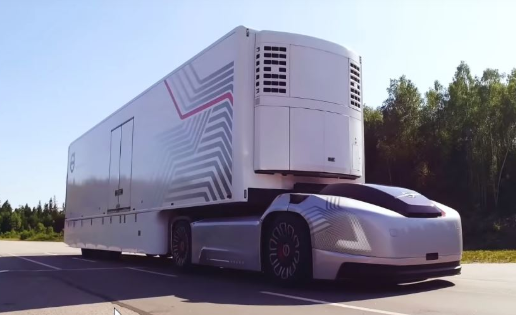2020 Insights into Opportunities and Use Cases for Autonomous Trucking to 2040

The COVID-19 pandemic has underlined the need for autonomous trucks and their effectiveness during emergencies
during emergencies
The “Opportunities and Use Cases for Autonomous Trucking, Forecast to 2040” report has been added to ResearchAndMarkets.com’s offering.
Global trucking demand is on the rise with the consistent increase in capacity, need for faster transfer influenced by economic developments, new business ventures, and changing buying patterns. However, the trucking industry in general is plagued by concerns like driver shortage, vehicle price increases, fuel price volatility, road safety, and performance limitations amidst rapidly transformative freight handling, stocking, and distribution practices as well as infrastructure changes. Trucking, however, has remained conventional in general. Digitalization and the advent of technology have helped identify gaps and harness efficiency to the best.
Autonomous trucks are viewed as the next logical leap to overcome existing bottlenecks and to keep pace with the rapidly evolving ecosystem. The COVID-19 pandemic has underlined the need for autonomous trucks and their effectiveness during emergencies. With this pandemic, the industry faces issues such as driver shortage and severe commodity demand triggered by panic shopping. Autonomous vehicles (AVs) offer a solution to both the aforementioned with the capability of driving longer hours and safely. Logistics and shipping operators have been provided with a strong case to include self-driving trucks in their fleet as the means of a response action plan in the event of unforeseen emergencies.
Unlike humans with the limitation of operating hours, systems can operate trucks 24×7 effectively, increasing commodity flow within the freight value system. Perception and visual systems can acts as additional eyes to the driver, while analytics and predictive algorithms enhance attentiveness, thus helping the driver traverse through unforeseen events. Cost effectiveness of autonomous trucks will aid fleet operators to achieve faster return on investment (RoI) and help address freight supply pressure.
Although the technology required to make trucks completely autonomous without drivers is still very nascent, the achieved capabilities have a variety of application scope. Features such as Advanced Emergency Braking, Adaptive Cruise Control, Lane Change Assist, and Reverse Assist are the first steps towards achieving a working package in the near future, while individually acting as safety and driver assist functions. On the basis of SAE classification of the levels of autonomy, the industry is already well accustomed to absorb Level 1 and Level 2 technologies.
North America and Europe are leading the global autonomous truck transition with many industry stakeholders based out of or testing vehicles in these regions. Cross-brand platooning trials were conducted in European test beds to understand the applicability scope of the technology. Many cities are upgrading their underlying infrastructure to enable V2V and V2X transmissions needed for trucks to operate autonomously. Government-funded initiatives with collaborative efforts from multiple and diverse industry participants are being done to fast-track the development of autonomous trucks.
Liability remains one of the most significant hurdles for autonomous driving. Regulations remain rudiment and not exhaustive in terms of functional requirements and are very conservative with respect to deployment on public roads. In effect, they mandate a certain level of safety features to be a requirement for the sale and registration of trucks. Industry stakeholders need to be provided with a comprehensive framework and guidance plan to explore, take next steps, and invest suitably in relevant development areas.
For more information about this report visit https://www.researchandmarkets.com/r/r5phac
Category: AUTONOMOUS, Driver Stuff, Featured, General Update, Green, News










